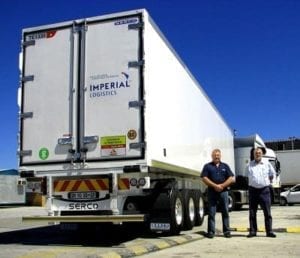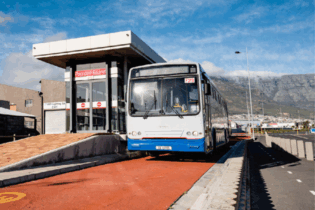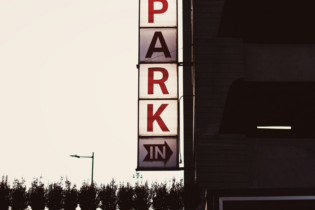Transport World Africa learns about the technologies used in the refrigerated semi-trailers recently provided by Serco to a leading logistics operator.
The bulk of the operator’s 35 vehicles will be used to service the local needs of a frozen vegetable producer while three units will operate in Namibia to distribute goods to newly opened food stores there. Clinton Holcroft, managing director of Serco, answers some questions about the trailers. Four of the trailers are fitted with Thermoking multitemperature units. Can you explain what these are? What are the pros and cons of these units? CH By fitting the multitemperature (MT) cooler units, it is possible to set different temperatures for different compartments within the trailer. This enables products such as frozen, chilled and dry goods to be simultaneously transported within one vehicle. The compartments are separated with an insulated, moveable partition. Benefits include an improved shelf life for perishable goods and the improved utilisation of the trailer by ensuring it is fully loaded. The negative spin-off is that the equipment costs more and access to products within the different compartments is limited. The rest of the trailers are equipped with standard, single-temperature cooling units. What are the limitations of these units and what cargo are they best suited to? Single-temperature trailers are widely used as they are cost-effective and, generally, the larger portion of the load only needs one temperature. If products requiring different temperature need to be loaded into the trailer, it is possible to use a movable partition to separate dry goods and refrigerated goods, and use separate cold boxes with dry ice or eutectic plates for the frozen goods. The multitemperature units enable goods to be transported at different temperatures and in different compartments. Why is it important to compartmentalise frozen goods? If the optimum cold chain is not maintained, product shelf life will be reduced. The risk of spoiled goods also increases. Separating the load also helps the cooler unit to run more efficiently, as it is primarily designed to maintain temperature.Two of the trailers are fitted with aerodynamic side skirts, as the client wants to monitor fuel consumption. Can you tell us what these side skirts are made of and how were they tested to ensure fuel consumption benefits?
The side skirts are manufactured from a flexible and durable polypropylene plastic. They are tested on a test track and certified independently. Variables such as tyre pressure, wind, traffic, and driver habits are isolated to eliminate their effect on the results. We did a road test in conjunction with Spar and MiX Telematics to measure the effect and found a 2.5% saving at an average speed of 68 km/h. At higher speeds, the saving is in excess of 5%. Due to the many variables, transporters generally find it hard to measure a consistent saving and hence are often reluctant to fit such accessories. However, with the growing awareness of the need to reduce fuel costs and CO2 emissions, transporters are becoming more receptive to using devices, such as these, that have been proven to save costs for highway travel. All the trailers are fitted with aluminium rims. What are the benefits? Aluminium rims are lighter and enable an improvement in payload of approximately 180 kg. They are stronger and slightly improve tyre wear. EBS brake systems have been fitted. What is EBS and why use it? EBS (electronic braking system) is an upgrade on the more widely used ABS (air braking system). It is intelligent and improves the braking efficiency of the truck and trailer combination, which improves road safety. The trailers use air ride suspension. What are the benefits to using this type of suspension? Air suspension enables the trailer floor height to be adjusted during loading and off-loading for improved efficiency. It also offers a softer ride for the goods transported. This is an advantage, for example, when transporting fruit, as there will be less bruising







